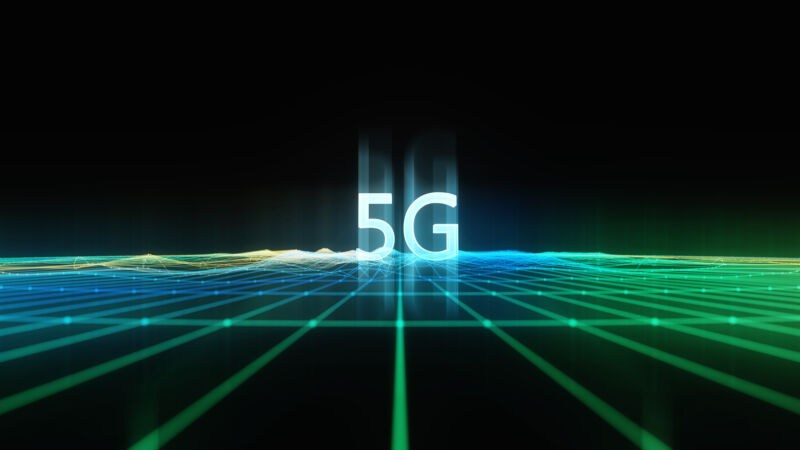5G in the US —
It’s an upgrade over 4G but not a huge one due to reliance on low-band spectrum.
Jon Brodkin
–

Getty Images | zf L
Average 5G download speeds in the US are 50.9Mbps, a nice step up from average 4G speeds but far behind several countries where 5G speeds are in the 200Mbps to 400Mbps range. These statistics were reported today by OpenSignal, which presented average 5G speeds in 12 countries based on user-initiated speed tests conducted between May 16 and August 14. The US came in last of the 12 countries in 5G speeds, with 10 of the 11 other countries posting 5G speeds that at least doubled those of the US.
The US’s average 5G speed is 1.8 times higher than the country’s average 4G download speed of 28.9Mbps. User tests in neighboring Canada produced a 4G average of 59.4Mbps and a 5G average of 178.1Mbps. Taiwan and Australia both produced 5G averages above 200Mbps, while South Korea and Saudi Arabia produced the highest 5G speeds at 312.7Mbps and 414.2Mbps, respectively.
In the US, average download speeds for users who accessed 5G at least some of the time was 33.4Mbps—that figure includes both their 4G and 5G experiences. This was the second lowest of the 12 countries surveyed by OpenSignal, with the highest speeds coming in Saudi Arabia (144.5Mbps) and Canada (90.4Mbps). The US fared better in 5G availability, the percentage of time in which users are connected to 5G; the US figure in that statistic is 19.3 percent, fifth best, with Saudi Arabia placing first at 34.4 percent and the UK placing last at 4.5 percent.
These charts show how the 12 countries stack up in 4G and 5G download speeds, the percentage of time users are connected to 5G, and overall download speeds:
OpenSignal says it collects “billions of measurements daily from over 100 million devices globally.” OpenSignal told Ars that the 12 countries included in the report are those in which it has collected the highest-quality data.
Modest speed bump in low-band spectrum
The relatively small gap between 4G and 5G speeds in the US (28.9Mbps vs 50.9Mbps) reflects the widespread use of low-band spectrum for both the old and new networks. T-Mobile in particular has upgraded large portions of its low-band 4G network to 5G, which provides a speed boost but not the huge speed upgrades possible in 5G networks that rely on high-band spectrum. OpenSignal’s report explained:
The modest 5G download speeds in the US are due to a combination of the limited amount of new mid-band 5G spectrum that is available and the popularity of low-band spectrum—T-Mobile’s 600MHz and AT&T’s 850MHz—which offer excellent availability and reach but lower average speeds than the 3.5GHz mid-band spectrum used as the main 5G band in every country outside of the US.
Previous OpenSignal research released in June, based on tests between March 16 and June 13, showed that Verizon is far and away the US leader in average 5G download speeds, at 494.7Mbps. T-Mobile and its newly purchased subsidiary Sprint both posted average 5G speeds of just over 49Mbps while AT&T posted an average of 60.8Mbps.
But Verizon’s 5G network is tiny, largely because of Verizon’s reliance on millimeter-wave frequencies that are easily blocked by walls and don’t travel far, so Verizon’s high 5G download speeds had practically no impact on the US average across all carriers. Users of OpenSignal’s speed-test app were able to get a Verizon 5G signal just 0.4 percent of the time, compared to 22.5 percent for T-Mobile, 14.1 percent for Sprint, and 10.3 percent for AT&T. These charts from OpenSignal’s June report show the average 5G download speeds by carrier, 5G availability by carrier, and overall speeds experienced by 5G users on each carrier:
Average speeds for customers who connected to 5G at least some of the time; the average includes both 4G and 5G.
For more detail on how 5G works across different spectrum bands, see Ars’ Jim Salter’s recent feature, “What the advent of 5G—mmWave and otherwise—will mean for online gaming.”
Despite Verizon’s small 5G network, the US ranks higher in 5G availability than in 5G speeds because the low-band spectrum used by other carriers “is ideally suited to enable great 5G reach and allow users to spend more time connected than in countries with higher frequency 5G spectrum,” OpenSignal wrote in today’s report. “In the US the low-band 5G services of T-Mobile and AT&T have helped drive a high 5G availability result. T-Mobile US’ very recent launch of standalone access 5G—where a phone no longer needs to connect to 4G in order for 5G to work—should help 5G services in future.”
The gradual shift from 4G to 5G might seem familiar to those who remember the shift from 3G to 4G that began about a decade ago. The 5G market is currently “immature” in OpenSignal’s view. “We are still in the early stages of a 5G era that will last for at least a decade because the first 5G services launched only in 2019, and in a number of countries we continue to see 5G services aimed at smartphone users launching for the first time,” the report said.

